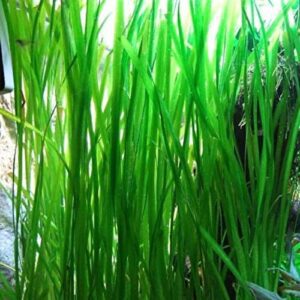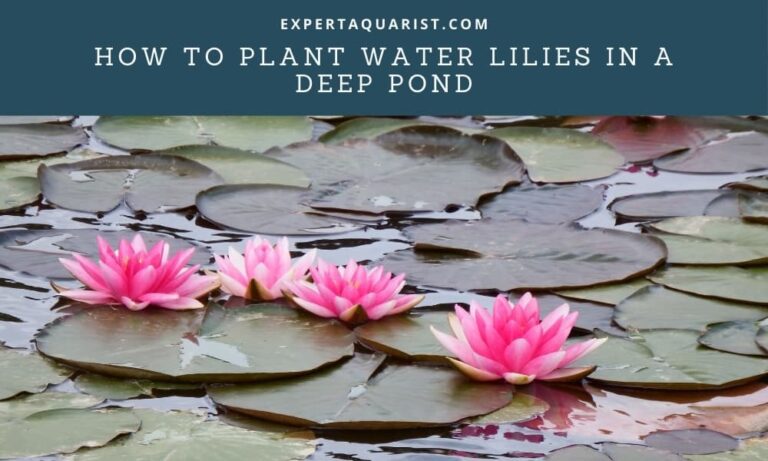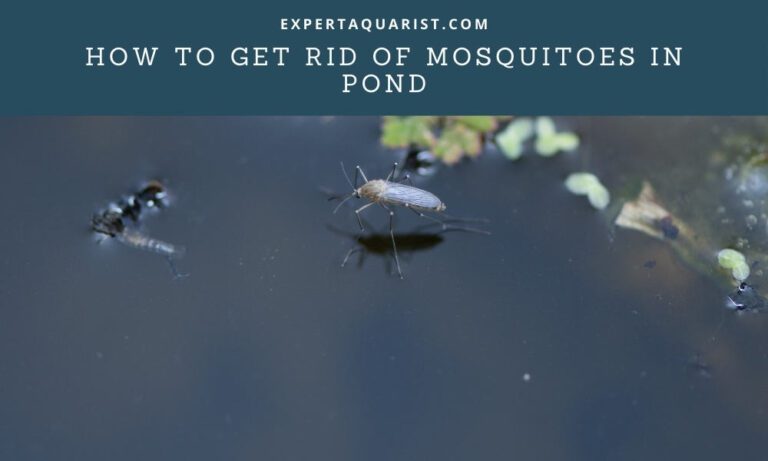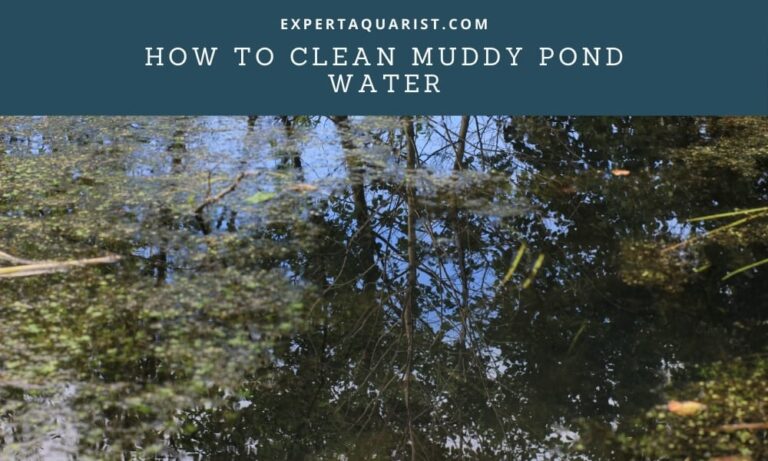Fish and plants are the most essential parts of the ecosystem of a pond. To thrive in that ecosystem, they need a few key things and sunlight is one of these factors.
Sunlight is extremely important for both the flora and fauna of the pond ecosystem. Ideally, A pond needs to have at least 4-6 hours of direct sunlight for the plants and the fish to be healthy. But there are some plants which can make do with 3-4 hours of sunlight as well.
Whether garden ponds need sunlight or not isn’t our topic of debate, they definitely need it. But, the real issue is how much of it that they need. Let’s take a look at how much sunlight a garden pond needs and how you can manage it.
Necessity of sunlight
Sunlight is necessary for everything that lives in the pond in every aspect of their lives. From preparing food to bring out the best colors, sunlight has an effect on every facet of their life cycles. Let’s take a look at some of the reasons that sunlight is necessary for your garden pond.
1. Maintaining Proper oxygen level
One of the main reasons that you need proper sunlight falling onto your pond is sunlight’s role in the production of oxygen. Sunlight is essential for aquatic plants (or any plants for that matter) to produce food through photosynthesis. As a result of photosynthesis, they produce oxygen which is a must for the fish to live in. So if the pond isn’t getting enough sunlight, the plants won’t be able to produce sufficient oxygen and the fish will die off gradually.
Read Next: How to increase oxygen level in pond
2. Bringing the color out of fish
Being the life force behind the plants and animals isn’t the only benefit of sunlight. They can also bring the brightest of colors out of some fishes. There is a species of koi named Yamabuki Ogon, which if kept in proper sunlight for a couple of months, has the coloring of vibrant metallic yellow.
3. Increasing the water temperature in winter
In winter, the water in your pond can freeze which means you might have to spend money buying a de-icer. Freezing ponds are also harmful to the fish living in them. Also, frozen water can harm the pond pump too. If exposed to the sunlight for the suggested 4-6 hours a day, the water temperature will continue to be above the freezing point, which will prevent it from becoming ice.

Disadvantages of Excessive Sunlight
The fact that sunlight is necessary for your pond doesn’t mean you have to scorch your pond in it. As with everything else, excessive sunlight is very detrimental to the environment and the ecosystem of the pond. Some of such disadvantages are being discussed below.
1. Reducing the amount of oxygen
It might sound hypocritical that just after we established that sunlight is needed for oxygen production, we are saying that sunlight may reduce the amount of oxygen in the water. This will happen if the water is exposed to too much sunlight instead of the average 4-6 hours. Warm water holds less oxygen than cold water. So too much sunlight will make the water less oxygenated.
If the water has insufficient oxygen, you may notice the fishes are appearing to the surface more often, and it seems they are gasping for air. It is better to keep the water temperature around 68-74 degrees Fahrenheit. Although fishes like koi can tolerate temperatures as low as 59 degrees and as high as 77 degrees, it is optimum that you keep the water temperature around 70 degrees.
2. Sunburns in the fish
A shallow pond means the fish in the pond have fewer areas to hide if the temperature of the water gets too high for their comfort. In this case, exposure to too much sunlight will lead the fish to get sunburnt. In case you are wondering, yes, even animals like fish can get sunburnt like us humans.
3. Algal Bloom
It is beneficial for the pond ecosystem to have a certain amount of algae in it. Not only do they act as natural foods for the fish in the pond, but they also act as a source of oxygen. But too much sunlight will result in an algal bloom.
Algal blooms are incidents where the algae reproduction rate is way more than necessary, and instead of being beneficial to an ecosystem, it becomes detrimental to it. Due to this, algae will cover the whole surface of the pond, taking in all the sunlight and not allowing it to reach the water. They can also suffocate the fish inside as way less air can get through the cover of algae.
4. Evaporation of Water
If exposed to extended periods of sunlight, you run the risk of water evaporation from your pond. This is an unwanted hassle as you will need to top up the pond more frequently than you originally had to.
Controlling the Sunlight exposure
Creating Natural shed :
The best method that you can follow to control how much sunlight your pond is being exposed to, is by adding a way to shade the water. You can create natural shade by planting trees or plants at the side of the pond.
One downside of this is that leaves and branches will fall right into your pond, creating even newer problems for you since you have to clean these up. If they are left in the water, they will rot and make the water toxic. You can plant Dwarf Cattail on the west or the south side of the pond to provide shade for the pond.
Creating a man-made shed :
To avoid the problem mentioned above, you can build a man-made shade or canopy. Not only will this provide shade for the fish, but will also bring some style. You can create this canopy with some tarp.
Installing Fish Caves:
But the easiest solution to overexposure to sunlight is to build or install fish caves or shelters. Shelters are easier to install in the water than caves as you can just place shelters in the water for the fish to swim within it when the heat is too much, whereas you have to build the caves yourself within the pond. Not only will these caves and shelters prevent your fish from getting sunburnt, but they are going to save them from predators as well.
Adding pond dye:
Pond dye is an excellent new technology that prevents too much sunlight from entering the water by darkening it. It is absolutely safe for the fish and plants in your pond. There are a few colors of dye you can choose from, such as blue, green and black. The black dye can block the most amount of sunlight.
Planting aquatic plants:
Even aquatic plants can be utilized to manage inappropriate sunlight exposure. Plants such as hyacinths and water lilies are excellent choices for this purpose as they create shade underneath the water surface which can be used by the fish. You can plant lilies via water bags or baskets. They can be then put in places that you seem easier for the fish to get to. You can even plant taller plants for shade as reed plants. They have a different way to control sunlight as they cast shadows over the water which can be utilized by the fish.
Benefits of shade
Just because you have to expose your pond to sunlight does not mean there are no values of positioning your pond in shade. Shades are as necessary for the plant and animal life in the pond as sunlight. The advantages of having shade around your pond are discussed below :
Makes the growth of algae harder
As I discussed before, algae need sunlight to grow. So if they are not getting enough sunlight, they will not be able to grow properly and create problems for your pond later down the line. The two most common types of algae that grow in your pond are string algae and suspended algae. Both of these require sunlight to grow which will not be possible if they don’t get enough sunlight.
Stabilizing the water temperature
Another way the shade can help is by stabilizing the temperature of the water. In the hot summer weather, they will keep the water temperature low. On the other hand, during the winter, the shade can produce a micro-climate that keeps the water temperature a bit warmer.
Disadvantages of shade
There are some downsides to having the ponds in shaded areas as well. They are :
Falling leaves and branches
The biggest drawback of natural shade provided by trees and plants around the pond is falling debris. Leaves and branches will continue to fall on the water, making the water dirty. If left unattended, they can make the water uninhabitable for the fish and plants.
Limited plant selection
Another disadvantage of shading is that you can choose from a limited number of plants to shade your pond. You are out of luck if you want flowering plants to shade your pond. Even water lilies will produce leaves only.
Managing an Overshadowed pond
In case your pond is too shaded and not getting exposed to sunlight as much as it needs to, then you’ll have to find out how to manage shade in a pond.
You can take a few steps to manage the amount of shade around your pond.
Change the plants that are living in your pond. Choose the plants that require less sunlight. There are some plants that can live with getting as little as three hours of sunlight only.
You can also choose fish that can thrive on less sunlight. This way they won’t suffer from being underexposed to sunlight.
If you aren’t getting enough sunlight, the pond will lack nutrients. In order to overcome this problem, use fertilizers which will fill up the fertilizers that the pond is lacking.
Plants will not be able to produce enough oxygen for the fish in your pond to thrive if they don’t get enough sunlight. So to produce more oxygen, you can install an aerator or a pond pump which will produce more oxygen in the pond.
Plants that need more sunlight
If you live in a warm area where the sun is more intense during the day, you need plants in your pond that need sunlight in abundance. Variegated sweet flag is one of these plants. They are a kind of grassy plant that prefers to have roots in water that is shallow, but the leaves are always out in the open. It is an excellent choice to plant on the outer side of the bank of the pond.
Water lilies are another excellent choice for your pond because they not only love sunlight but can also thrive in stagnant water. They come in various different colors and sizes, providing you with a whole range of choices.
Another plant you can choose for your pond is the Arrowhead. They are a tropical plant with large leaves which provide excellent shade for the fish living in the pond.
If you have an open sunny area around your pond most of the time, these are fantastic picks. I myself prefer water lilies in most ponds.
Plants that need less sunlight
If you don’t have enough sunlight in your area, there is no need to get frustrated. You can still choose from a number of plants that require minimum sunlight to thrive.

Water hyacinths are unfortunately banned in some US states [like Texas, California, Los Angeles, Arizona, etc.] because of being an invasive species, but if you are living outside of those areas, it is an excellent choice to have in your pond. They not only tolerate cold weather, but they also produce stunning lavender flowers that can increase the beauty of your pond many fold.
Marsh Marigold is another plant that needs less sunlight. These 8-inch tall plants also produce beautiful flowers.

Vallisneria is a species of submerged plant which is an excellent source of oxygen. Be sure to trim them every once in a while, other than that, you don’t need to pay too much attention to it.
Comanche is a kind of lily whose blooming season is quite long. They have flowers which when bloomed, are yellow and later turn into coppery bronze color.
Indiana is another species of lily which is smaller than most of its cousins. At first, the flowers are of apricot color and then they change to orange-red color.
Attraction is yet another kind of lily that is very hardy with large red flowers.
A medium-sized lily, James Brydon has deep red colored flowers and bronze-colored pads. Texas dawn is another kind of lily that has leaves that have reddish-brown speckles.
There is one other medium to large-sized lily called Virginia whose white flowers are shaped like a star.
Charlene Strawn is suitable for ponds that are medium to large in size. They have yellow flowers.
These are safe bets if you got a pond that isn’t exposed to sunlight often.
Parting Words
With all of the aforementioned information, it’s clear that garden ponds need sunlight to survive and thrive. You have to strike a balance between the amount of sunlight and shade provided to your pond to ensure it is clean and healthy for the fish and plants to live.
Overall, it is important for the pond’s inhabitants to be exposed to an adequate amount of natural light on a regular basis in order for the plants and livestocks inside of the pond to grow without any problems.






